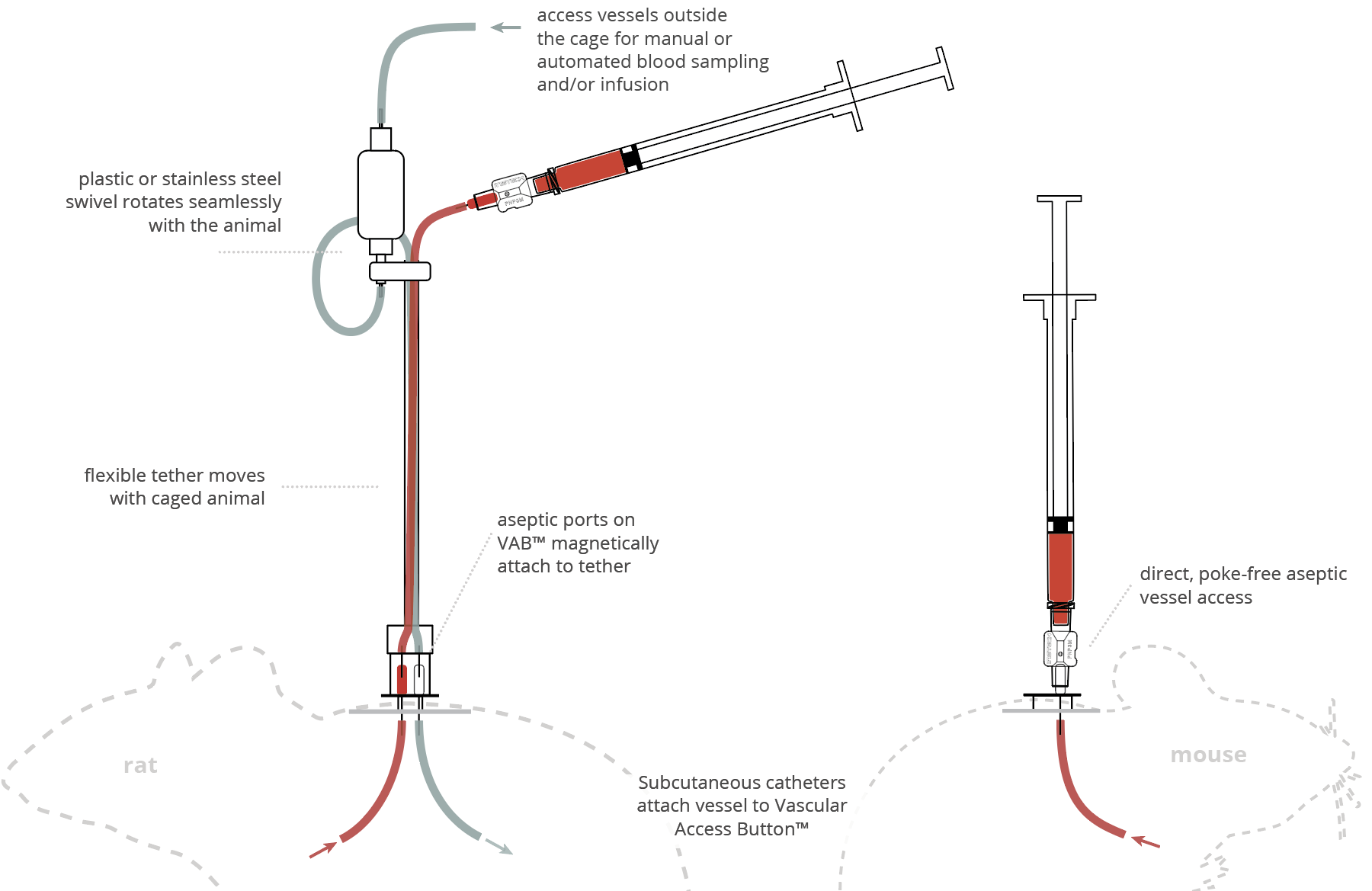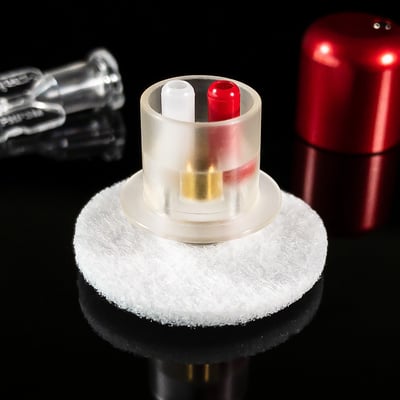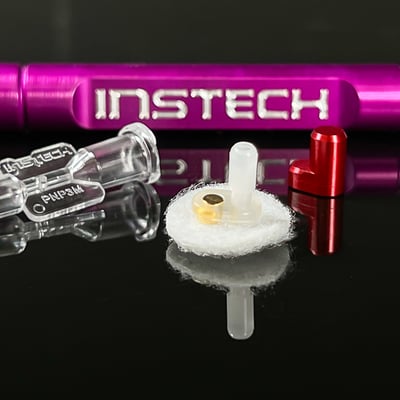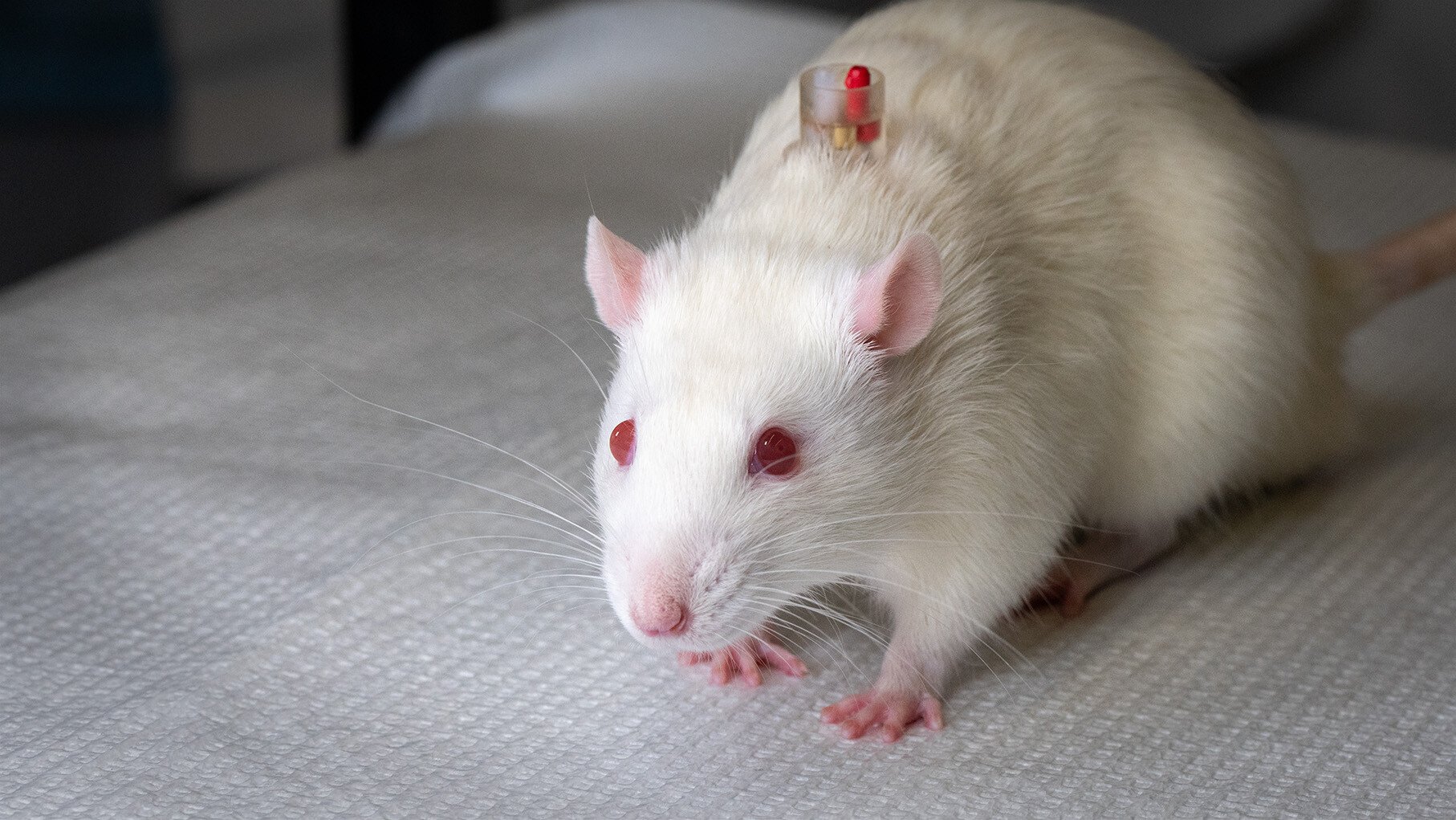Everything you need to know about VABs™.
An animal welfare refinement over many other methods of vascular access, VABs™ are quickly becoming the preferred method of catheter exteriorization for mice (one or two catheters) and rats (one to four catheters). This guide explores everything you need to know about the Vascular Access Button™.
Table of Contents:
- The Vascular Access Button™ System
- What are the advantages of using a VAB™?
- What to Do When You Need Catheterized Rodents But You Don’t Have a Surgeon On Staff
- Does Instech offer any surgery training courses or advice?
- Are there any video resources available?
- Is the VAB™ only for mice and rats?
- Have there been any publications demonstrating VABs™ in use?
The Vascular Access Button™ System
Our Vascular Access Buttons™ for mice and rats are built around our PinPort™ technology that simply and cleanly connects an implanted catheter to a syringe for direct access, or to a tether for continuous access. The VAB™ is a closed system as opposed to the traditional externalized or "open" systems. The PinPorts™ ensure all the ports remain closed - the magnetic cap simply allows for group housing after infusion or the samples have been taken.

What are the advantages of using a VAB™?
Low-stress Sampling and Infusion
No poking. No needles. Every time you pick up an animal, stress levels rise. Every time you poke an animal, it gets worse. There is a better way! Hands off rodent blood sampling allows you to take precise, low stress blood samples all without using a needle. Take your samples from outside the cage using a swivel and tether. For even faster collection, use a capillary tube with injector. Hands free sampling - better for the animal, and better for you.
Proven Long-term Patency
At the American College of Toxicology’s 2019 meeting, Charles River Laboratories presented a poster on the extraordinary patency they achieved during a large infusion toxicology study in rats: flushing only every other week and locking with heparinized saline, CRL kept 94% of the rats’ femoral vein catheters patent for both sampling and infusion throughout the five-month study. This chart shows the impact of transcutaneous buttons on jugular vein patency in mice with flushing every seven days.
A separate study in mice found that the use of transcutaneous buttons kept catheters patent for up to five times longer than standard externalized catheters.
Another way to extend patency is to always ensure you are using pharmaceutical-grade lock and flush solutions. Non-sterile solutions can lead to patency problems, chemical purity issues, and more.
Group Housing
 For the first time, rodents with externalized catheters can be group housed. Studies show that group housing has numerous benefits including faster recovery time and better data. Thanks to protective aluminum caps, you no longer have to trade off this basic animal welfare requirement with the benefits of sampling and infusing through a catheter.
For the first time, rodents with externalized catheters can be group housed. Studies show that group housing has numerous benefits including faster recovery time and better data. Thanks to protective aluminum caps, you no longer have to trade off this basic animal welfare requirement with the benefits of sampling and infusing through a catheter.
What to Do When You Need Catheterized Rodents But You Don’t Have a Surgeon On Staff
To do the VAB™ surgeries in house you’ll need a trained surgeon with a steady hand, a dedicated surgical area with specialized surgical tools and microscopes, and SOPs to ensure aseptic technique. For some, this is a viable option. For others it's simply not possible. What do you if you are one of those researchers? Fortunately, there are a number of options available from in-person training courses to animal vendors that provide mice and rats that are already surgically modified.
Does Instech offer any surgery training courses or advice?
Successful patent vascular access and catheterizations require a skilled surgeon. We offer protocols, training, and education (virtually and in-person) programs for rodent microsurgery.
Andrée Lapierre, BS, LATG, CMAR, SRS leads our courses and education program at Instech. She has over 30 years of experience in animal research with the past 25 years focused on rodents and surgical procedures.
Are there any video resources available?
Use of the Vascular Access Button in Rats
Use of the Vascular Access Button in Mice
Rat Blood Sampling Outside the Cage
Refining Rodent Vascular Access: A Video Poster Presentation
IV Self-Administration in Rats
Automated Blood Sampling from a Mouse
Is the VAB™ only for mice and rats?
The VAB is most often used for mice and rats, but there have been a growing number of successful studies done on other models including ferrets, hamsters, rabbits and minipigs.
Have there been any publications demonstrating VABs™ in use?
Rats
| Ferring | Fewer complications compared to harnesses |
| AstraZeneca | Fewer complications compared to harnesses |
| Charles River | 94% bi-directional patency after 151 days |
| Charles River | Comparison of JVC and FVC patency in rats |
| Charles River | Tethered male and female rat study |
| Charles River | Minimizing handling with the VAB™ in female rats |
| Utrecht University | Comparison of Camcath, SAI and Instech buttons |
Mice
| Charles River | 100% patency in 28-day continuous infusion study |
| Charles River | Patency 5x longer than externalized catheters |
| Charles River | 84% patency for bolus dosing after 9 weeks |
| Charles River | Use in reproduction studies |
| Charles River | Comparison of patency with and without maintenance |
| Charles River | Refinements to intermittent IV infusion in mice |
| Duke University | Establishment of multi-stage intravenous self-administration paradigms in mice |
| The Jackson Laboratory | Refinement of jugular vein catheterization with Vascular Access Button™ in mice |
Other Species
| Ellegaard | |
| Frontage | Blood sampling from minipigs |
| Charles River | The Role of Vascular Access Buttons™ in Minipigs |
| US Army | Blood sampling from ferrets |
| Charles River | |
| Charles River |




